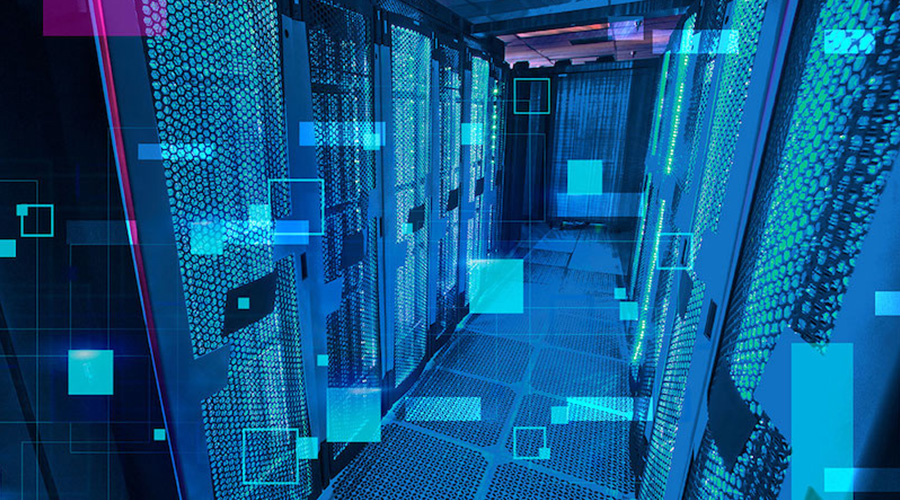Generative AI, a subset of artificial intelligence, has emerged as a transformative technology with the potential to revolutionize various industries. By learning from vast datasets and generating new content, generative AI models can create everything from realistic images and videos to compelling text and even functional code.
The rapid advancements in generative AI have sparked widespread interest and excitement, as it offers unprecedented possibilities for creativity, productivity, and problem-solving. However, harnessing the full potential of generative AI requires a robust infrastructure that can handle the computational demands of training and running complex models.

Cloud Infrastructure: The Backbone of Modern AI
Cloud computing has emerged as the de facto platform for AI development, providing scalable resources, flexibility, and cost-effectiveness. By leveraging cloud infrastructure, organizations can access powerful computing resources without the need for significant upfront investments.
This article will delve into the essential components and considerations for building generative AI solutions in the cloud. We will explore the key benefits of cloud-based infrastructure, discuss the popular cloud platforms available, and provide practical guidance for optimizing your generative AI deployments.
Benefits of Cloud Computing for Generative AI
Cloud computing offers several benefits for organizations developing generative AI applications:
- Scalability: Cloud platforms can easily accommodate the fluctuating computational needs of generative AI models, allowing for efficient resource allocation. This is especially important during model training, which can be computationally intensive.
- Cost-effectiveness: By avoiding upfront hardware investments and paying only for the resources used, cloud computing can significantly reduce costs. This pay-as-you-go model is ideal for organizations with variable workloads or limited budgets.
- Flexibility: Cloud infrastructure provides a flexible environment for experimentation and rapid iteration, enabling organizations to explore different approaches to generative AI. This agility is crucial in the fast-paced world of AI development.
- Time-to-market: The ability to quickly provision resources and deploy models can accelerate time-to-market for generative AI applications. This is essential in today’s competitive landscape where speed is often a key differentiator.

Essential Components for Generative AI in the Cloud
Building a robust generative AI infrastructure in the cloud requires a careful selection of components that can handle the computational demands and data requirements of these complex models. Here are the key elements to consider:
Compute Resources
- Central Processing Units (CPUs): While CPUs are versatile for general-purpose computing, they may not be the most efficient option for highly parallel tasks like training deep neural networks. However, they can still be valuable for certain components of generative AI pipelines.
- Graphics Processing Units (GPUs): GPUs are designed for parallel processing and are well-suited for tasks like matrix operations and image processing. They have become a popular choice for accelerating generative AI workloads.
- Tensor Processing Units (TPUs): TPUs are specialized hardware accelerators optimized for machine learning, particularly for training and inference of neural networks. They offer superior performance and energy efficiency for AI workloads, making them a popular choice for large-scale generative AI projects.
Storage
- Object Storage: This type of storage is ideal for storing large datasets and trained models, as it can handle unstructured data and offers scalable storage capacity.
- Block Storage: Block storage provides persistent storage for individual files or directories. It can be used for storing intermediate data or checkpoints during model training.
Networking
- High-speed network connectivity: A reliable and high-speed network is essential for efficient data transfer and communication between components of the generative AI infrastructure.
- Network optimization: Techniques like load balancing and content delivery networks (CDNs) can help improve network performance and reduce latency.
Data Management Tools
- Data lakes: Centralized repositories for storing large volumes of data in its raw format, providing a flexible and scalable solution for managing diverse datasets.
- Data pipelines: Automated workflows for moving, transforming, and analyzing data, ensuring efficient data flow and quality control.
Additional Considerations
- Scalability: The infrastructure should be designed to handle increasing workloads as the generative AI models grow in complexity and scale.
- Cost optimization: Strategies for managing costs and optimizing resource utilization, such as leveraging spot instances or reserved instances.
- Security: Implementing robust security measures to protect sensitive data and prevent unauthorized access.
- Performance optimization: Techniques for improving model training and inference speed, such as hardware acceleration, model optimization, and hyperparameter tuning.

Cloud Platforms for Generative AI: A Comprehensive Overview
Generative AI, with its ability to create new content, has gained significant traction in recent years. To effectively harness the power of generative AI, organizations often rely on cloud platforms that provide the necessary infrastructure and tools. This article will explore some of the leading cloud platforms and their offerings for generative AI.
AWS offers a comprehensive suite of services for generative AI, including:
- Amazon SageMaker: A fully managed platform for machine learning, providing tools for building, training, and deploying models.
- Amazon EC2: Provides virtual computing instances with various hardware configurations, allowing users to choose the most suitable for their generative AI workloads.
- Amazon S3: Offers scalable object storage for storing large datasets and trained models.
- Amazon Rekognition: A service for image and video analysis, which can be used for tasks like image generation and object detection.
GCP provides a range of services for generative AI, including:
- Vertex AI: A unified platform for machine learning, offering tools for building, training, and deploying models.
- Compute Engine: Provides virtual machines with various hardware configurations, allowing users to choose the most suitable for their generative AI workloads.
- Cloud Storage: Offers scalable object storage for storing large datasets and trained models.
- AutoML: A service that automates the process of building machine learning models, making it easier for non-experts to leverage generative AI.
Azure offers a comprehensive set of services for generative AI, including:
- Azure Machine Learning: A cloud-based platform for building, training, and deploying machine learning models.
- Azure Virtual Machines: Provides virtual machines with various hardware configurations, allowing users to choose the most suitable for their generative AI workloads.
- Azure Blob Storage: Offers scalable object storage for storing large datasets and trained models.
- Azure Cognitive Services: Provides pre-trained AI models for tasks like image recognition, natural language processing, and speech recognition.
Other Notable Platforms
- IBM Watson: Offers a suite of AI services, including Watson Studio for building and training machine learning models.
- Oracle Cloud Infrastructure: Provides a comprehensive set of cloud services, including compute, storage, and networking.
- Alibaba Cloud: Offers a wide range of cloud services, including AI and machine learning tools.
Best Practices for Building Generative AI Infrastructure
Scalability
To ensure that your generative AI infrastructure can handle increasing workloads, it’s essential to design for growth. Choose cloud platforms that offer flexible scaling options and can easily accommodate expanding requirements. Additionally, leverage autoscaling features to automatically adjust compute resources based on demand, ensuring optimal performance and cost-efficiency. For non-critical workloads, consider using spot instances to save costs, as they are often priced at a significant discount.
Cost Optimization
To reduce costs and maximize resource utilization, monitor your infrastructure usage and identify opportunities for optimization. Consider using reserved instances for predictable workloads to obtain discounted pricing. Additionally, implement cost management tools to track and manage costs, set budgets, and identify areas for improvement.
Data Management
Effective data management is crucial for generative AI. Choose appropriate storage options based on data characteristics and access patterns, such as object storage for large datasets and block storage for performance-critical workloads. Implement data governance policies to ensure data quality, security, and compliance. Automate data processing and transformation using data pipelines to improve efficiency and reduce errors.
Security
Protecting sensitive data and preventing unauthorized access is paramount. Implement strong security measures such as encryption, access controls, and regular security audits. Stay updated with security best practices and address vulnerabilities promptly. Ensure that your generative AI infrastructure complies with relevant industry regulations and standards.
Performance Optimization
To optimize performance, select compute instances with the right hardware specifications (e.g., CPU, GPU, TPU) for your specific workloads. Explore techniques like model compression, quantization, and pruning to reduce model size and improve inference speed. Leverage hardware accelerators like GPUs and TPUs to accelerate training and inference. Experiment with different hyperparameter values to optimize model performance and convergence.
Building a robust and efficient generative AI infrastructure requires careful planning and implementation. By following these best practices, organizations can optimize their AI deployments and achieve better results.



